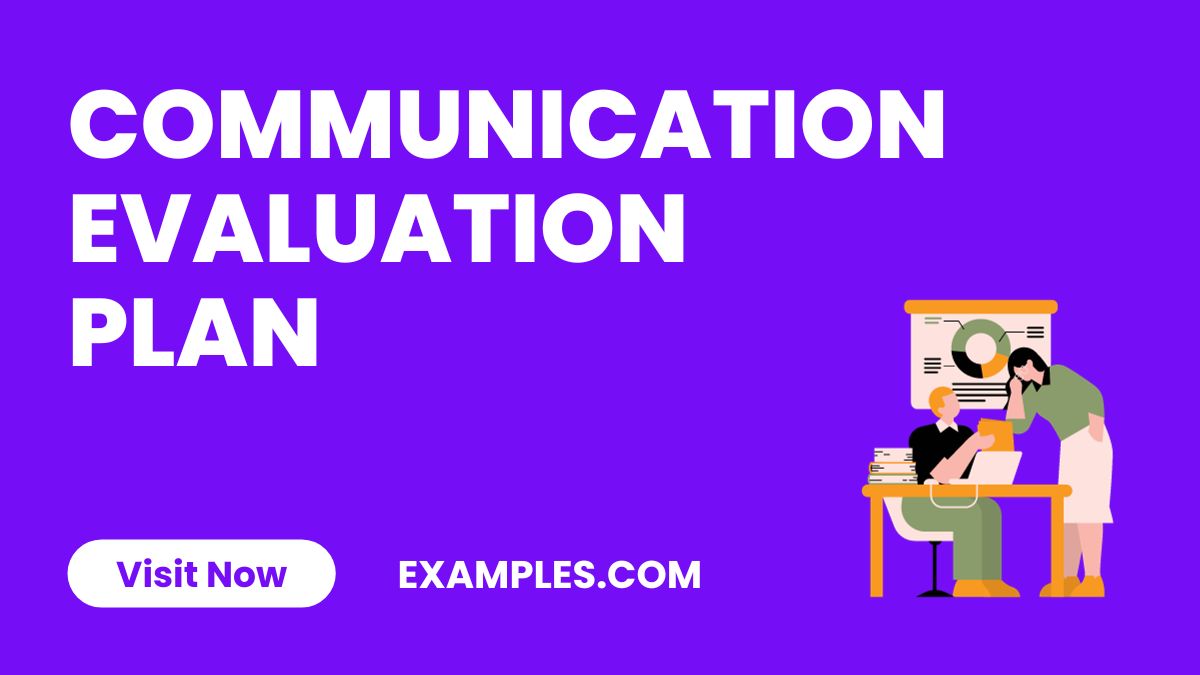9+ Communication Evaluation Plan Examples
The Communication Evaluation Plan guide offers an in-depth look at enhancing relationship communication. It integrates various communication examples to demonstrate practical approaches for identifying and resolving communication barriers. This guide is tailored for couples and individuals seeking to understand and improve their interpersonal dynamics, focusing on recognizing signs of miscommunication and offering effective solutions. Through real-world examples and strategies, it provides a pathway to strengthen connections and overcome communication challenges in relationships.
Download Communication Evaluation Plan Bundle
Communication Evaluation Plan
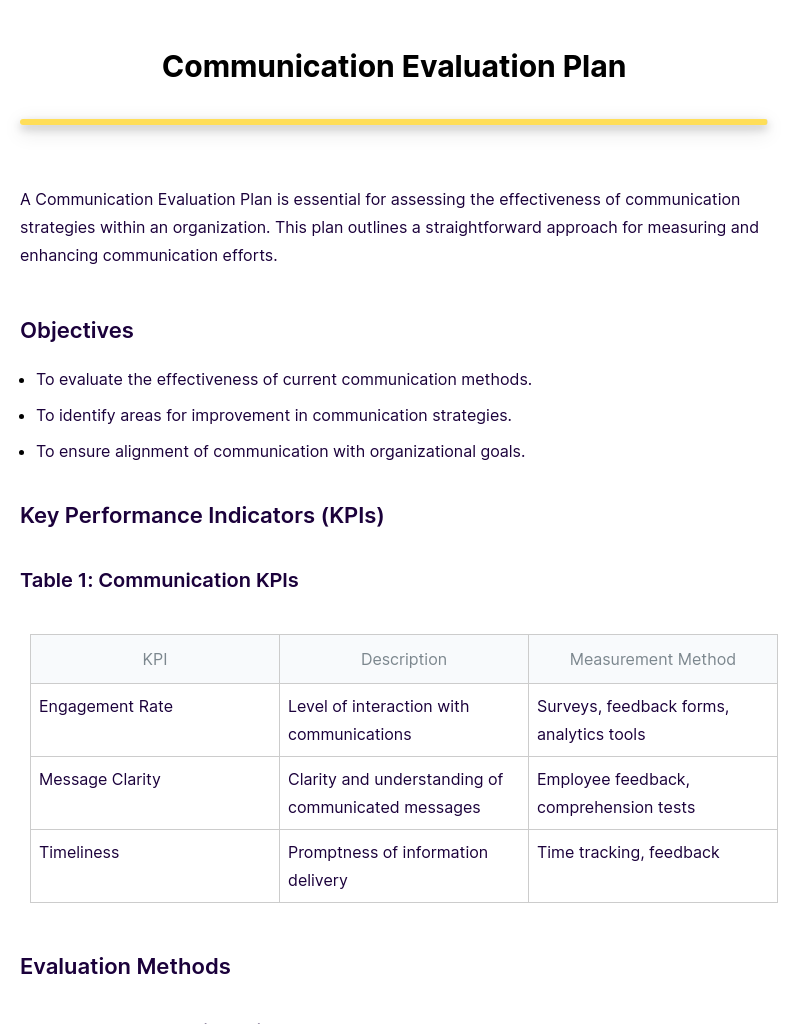
The article on Communication Evaluation Plans is a thorough overview of designing and implementing effective communication evaluation strategies. It focuses on methods to assess and enhance communication efforts within organizations. The guide includes key performance indicators, evaluation methods like surveys, focus groups, and communication analytics, and steps for a communication audit. Additionally, it offers an action plan and emphasizes the importance of continuous feedback and regular training. This resource is essential for anyone looking to improve organizational communication
Program Evaluation Communication Plan
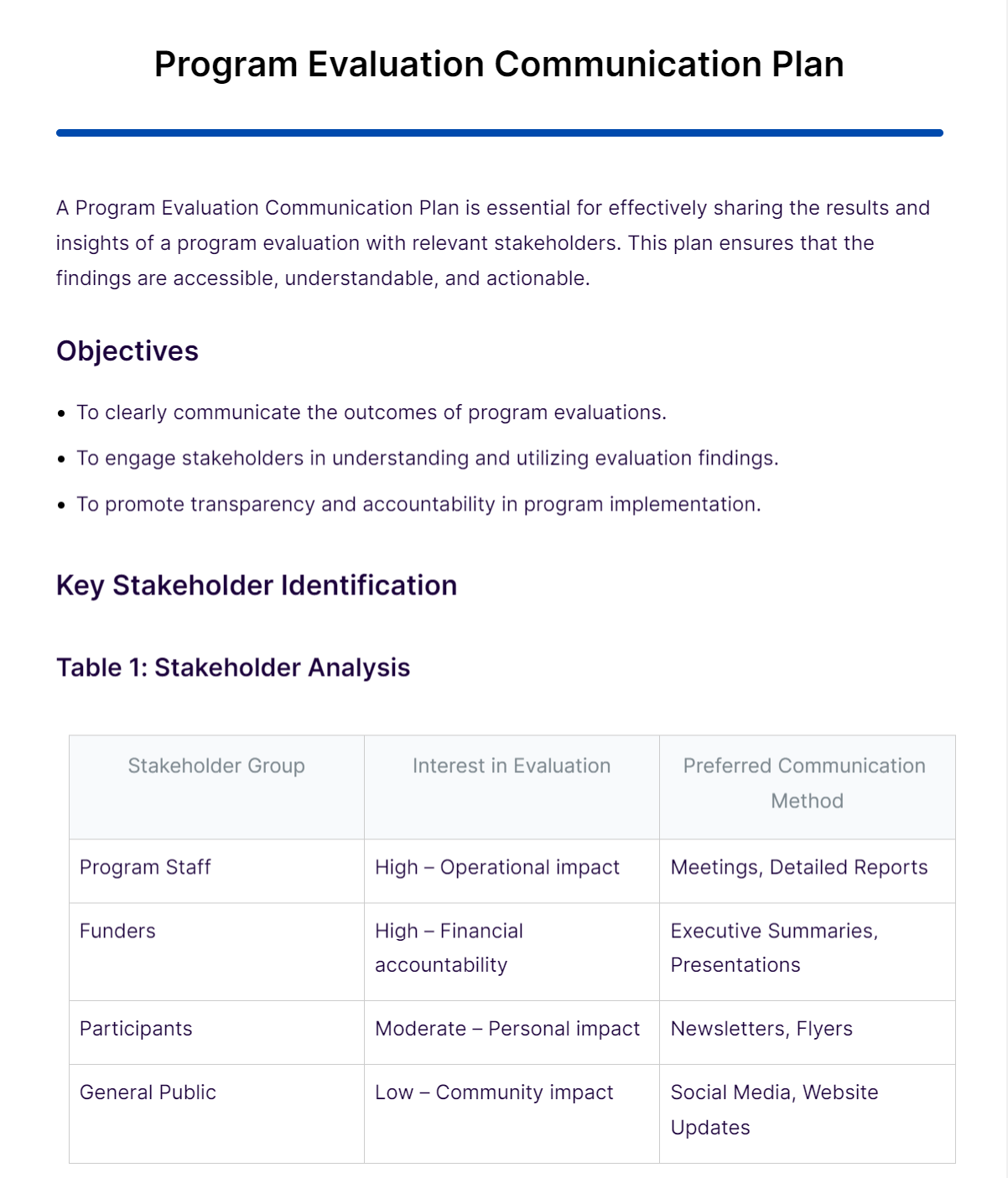
The article on Program Evaluation Communication Plan offers guidance on effectively communicating the results of program evaluations. It details strategies for engaging stakeholders, such as program staff and funders, through various communication methods like reports, executive summaries, and social media posts. The plan emphasizes the importance of clarity and conciseness in communicating evaluation outcomes and includes a timeline for reporting. This resource is particularly useful for professionals seeking to enhance transparency and accountability in program management
Evaluation Communication Plan for Project

The article Evaluation Communication Plan for Project on provides a thorough guide for effective project communication evaluation. It outlines strategies for monitoring, assessing, and reporting project progress and outcomes, ensuring stakeholders remain informed and engaged. The plan includes key components such as stakeholder mapping, communication methods, evaluation metrics, feedback mechanisms, and crisis communication, all crucial for the success of any project. This resource is valuable for project managers and teams seeking to enhance their project communication plan effectiveness.
Integrating Communication Plan in Evaluation
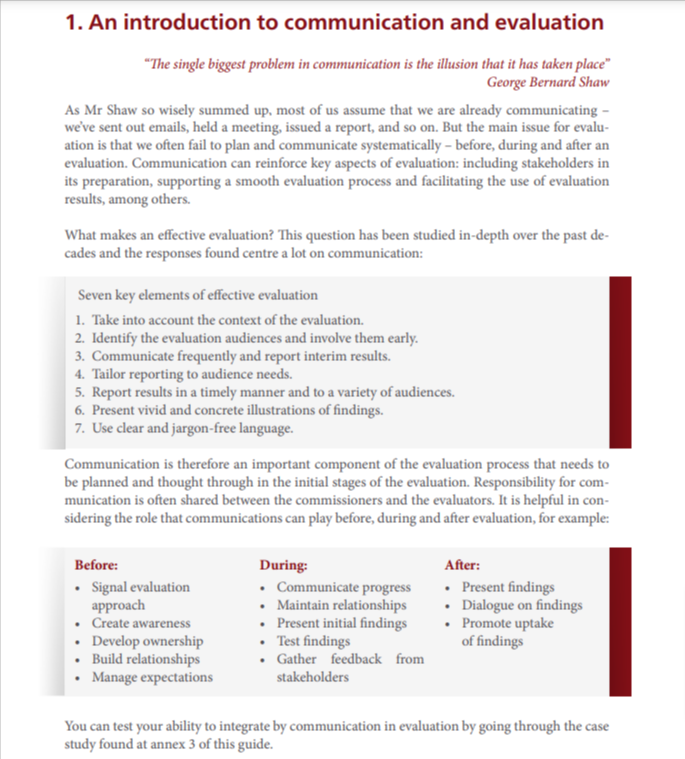
owlre.com
DownloadCommunication Plan Evaluation Report
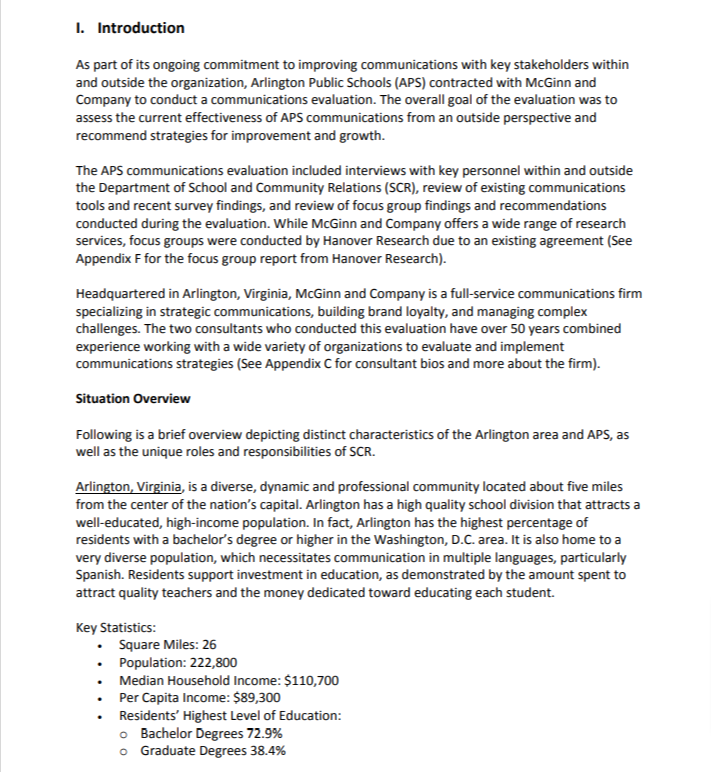
apsva.us
DownloadMonitoring and Evaluation of the Communication Plan
Effective monitoring and evaluation of a Communication Plan are crucial for ensuring its success. This involves regularly assessing the plan’s impact on communication dynamics and making necessary adjustments. Here are 10 examples:
- Quarterly Review Meetings: Schedule routine plan evaluations.
Example: “Let’s assess our quarterly communication progress and identify areas for improvement.” - Key Performance Indicator (KPI) Tracking: Monitor specific communication metrics. Example: “We have seen a 20% increase in team collaboration KPIs since implementing our plan.”
- Stakeholder Feedback Collection: Gather input from all involved parties.
Example: “Please provide your feedback on our recent communication efforts.” - Employee Engagement Surveys: Measure internal communication effectiveness.
Example: “This survey will help us understand how our communication plan impacts employee engagement.” - Client Satisfaction Scores: Evaluate external communication success.
Example: “Based on our clients’ satisfaction scores, we need to revise our client communication strategies.” - Social Media Analytics Review: Analyze digital communication reach.
Example: “Our latest campaign’s social media analytics will guide our online communication adjustments.” - Focus Group Feedback: Utilize qualitative data from focus groups.
Example: “Focus group insights will inform the next phase of our communication plan.” - Communication Audit: Conduct comprehensive plan audits.
Example: “An annual communication plan audit will help us refine our strategies effectively.” - Tool Utilization Analysis: Assess the effectiveness of communication tools.
Example: “Evaluating our current tools will ensure we’re using the best options for our needs.” - Crisis Communication Response Evaluation: Review responses to unexpected challenges. Example: “Analyzing our response to last month’s crisis will improve our future communication resilience
Evaluating a Communication Plan Strategy involves a comprehensive analysis to ensure the effectiveness of communication methods.
- Survey Feedback Analysis: Conduct surveys to gauge effectiveness.
Example: “On a scale of 1-5, how clear was our communication this month?” - Meeting Effectiveness Review: Assess the outcomes of meetings.
Example: “Did our team understand the project goals from our last meeting?” - Email Response Tracking: Monitor responsiveness to emails.
Example: “We noticed a 30% increase in prompt email responses after implementing our new communication plan.” - Social Media Engagement Metrics: Evaluate online interaction.
Example: “Our Facebook post engagement has improved since we started the new communication strategy. - Employee Satisfaction Surveys: Gauge internal communication satisfaction.
Example: “Please rate your satisfaction with our internal communication on a scale of 1-10.” - Client Feedback Collection: Obtain feedback from clients.
Example: “We value your opinion. Please let us know how we can improve our communication with you.” - Performance Metrics Analysis: Review performance indicators.
Example: “Since the new communication plan, our project completion rate has increased.” - Focus Group Discussions: Engage in qualitative feedback.
Example: “Let’s have a focus group to discuss our communication effectiveness.” - Peer Review Sessions: Implement peer assessments.
Example: “In our next team meeting, we’ll have a peer review session on communication styles.” - Communication Tools Utilization Review: Assess the tools used.
Example: “Our team’s use of collaborative tools has streamlined project communication.”
How do you Evaluate a Communication Plan?
Evaluating a Communication Evaluation Plan involves several key steps:
- Set Clear Objectives: Define what the communication plan aims to achieve.
- Feedback Collection: Gather feedback from all parties involved in the communication process.
- Performance Metrics: Utilize specific metrics to measure the effectiveness of communication.
- Regular Review Meetings: Conduct meetings to discuss and analyze the plan’s performance.
- Adaptability: Be open to making necessary adjustments based on feedback and performance outcomes.
- Documenting Changes: Keep a record of any changes made and their impact on communication.
How to Implement Evaluation Communication Plan
Implementing a Communication Evaluation Plan effectively involves several key steps:
- Set Clear Objectives: Define what you want to achieve with the plan, such as improving understanding or resolving conflicts.
- Identify Communication Barriers: Recognize issues like Miscommunication in Couples or Non-Verbal Misunderstandings.
- Develop Strategies: For each identified issue, create actionable strategies. This might involve practicing active listening or scheduling regular communication check-ins.
- Feedback Mechanism: Establish a system for feedback to adapt and refine the plan continuously.
- Regular Review and Adaptation: The plan should be dynamic, with regular assessments and updates to ensure its effectiveness.
- Seek External Support if Needed: Consulting a professional can be beneficial for complex issues like Trust Erosion or Intimacy Challenges.
The “Monitoring and Evaluation of the Communication Plan” emphasizes the importance of Monitoring, Evaluation, and Learning (MEL) in ensuring strategic and effective communication. It underscores MEL as a vital tool for understanding what communication strategies work and for accountability, demonstrating the uptake and quality of the work. The page references a toolkit developed by the Overseas Development Institute (ODI, UK), designed for think tanks, universities, and NGOs, which is particularly useful for developing a MEL approach for communication plans.
The enhancing the use of evaluation through communications and knowledge management. It aims to provide targeted decision-makers with evaluative evidence in real-time for adaptation, learning, accountability, and informed decision-making. The strategy emphasizes engagement with stakeholders, user-focused packaging and communication of evaluations, and improved accessibility of evaluative knowledge. It also includes advancing influential evaluation through advocacy and partnerships, and it supports the implementation of the UNFPA evaluation strategy. This approach is designed to build a culture of evaluation and strengthen national capacities, contributing towards the Sustainable Development Goals.



